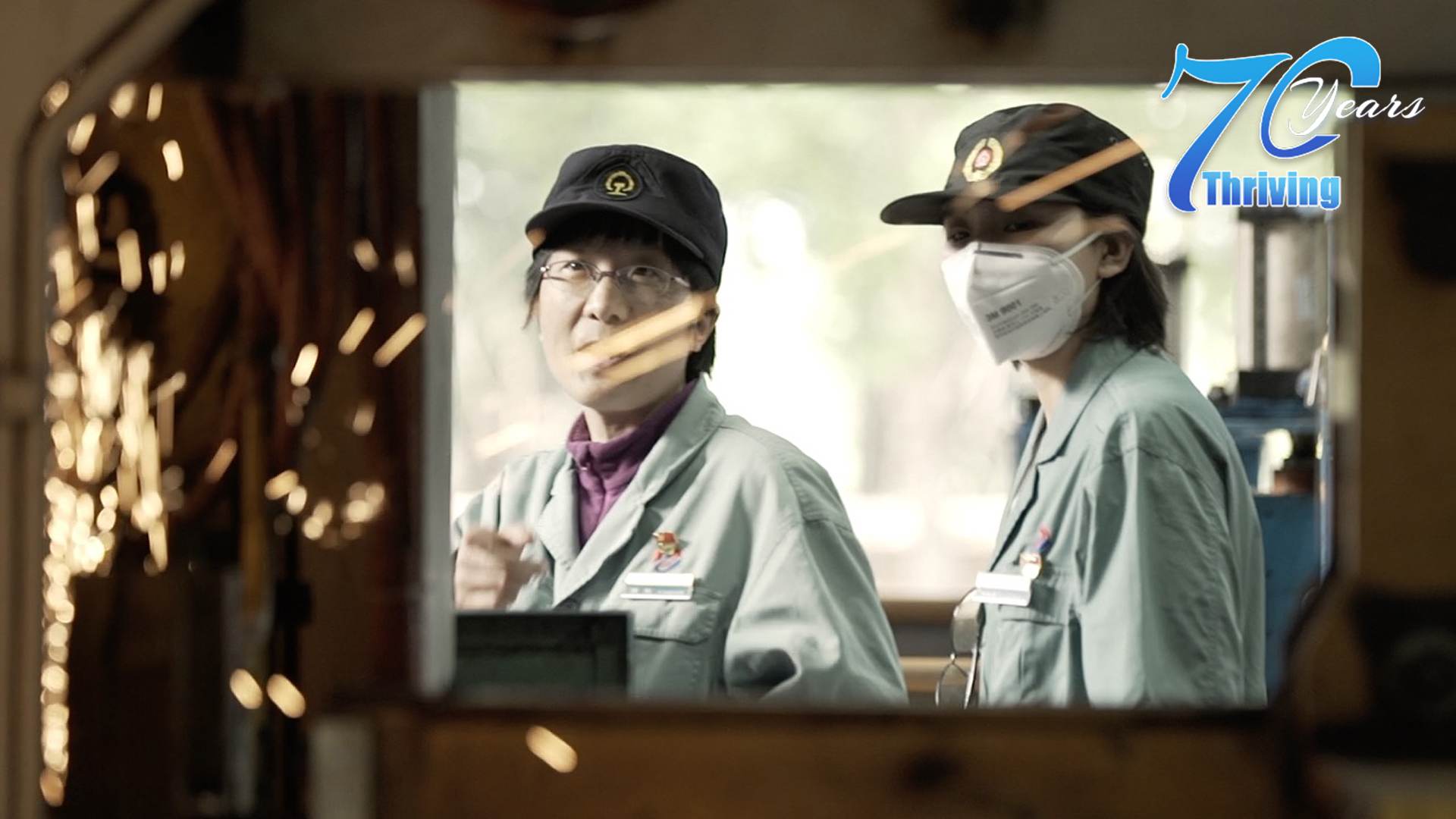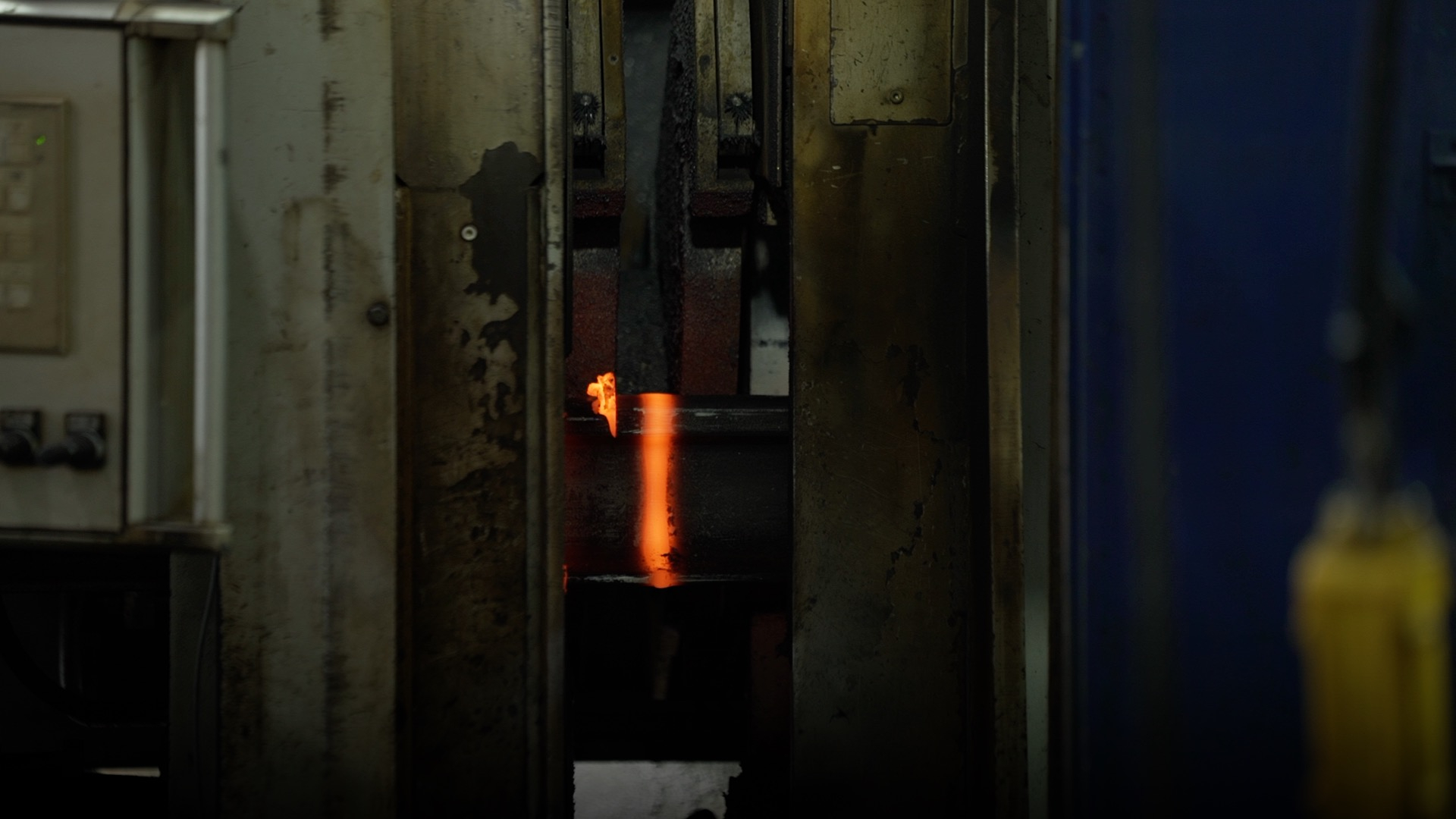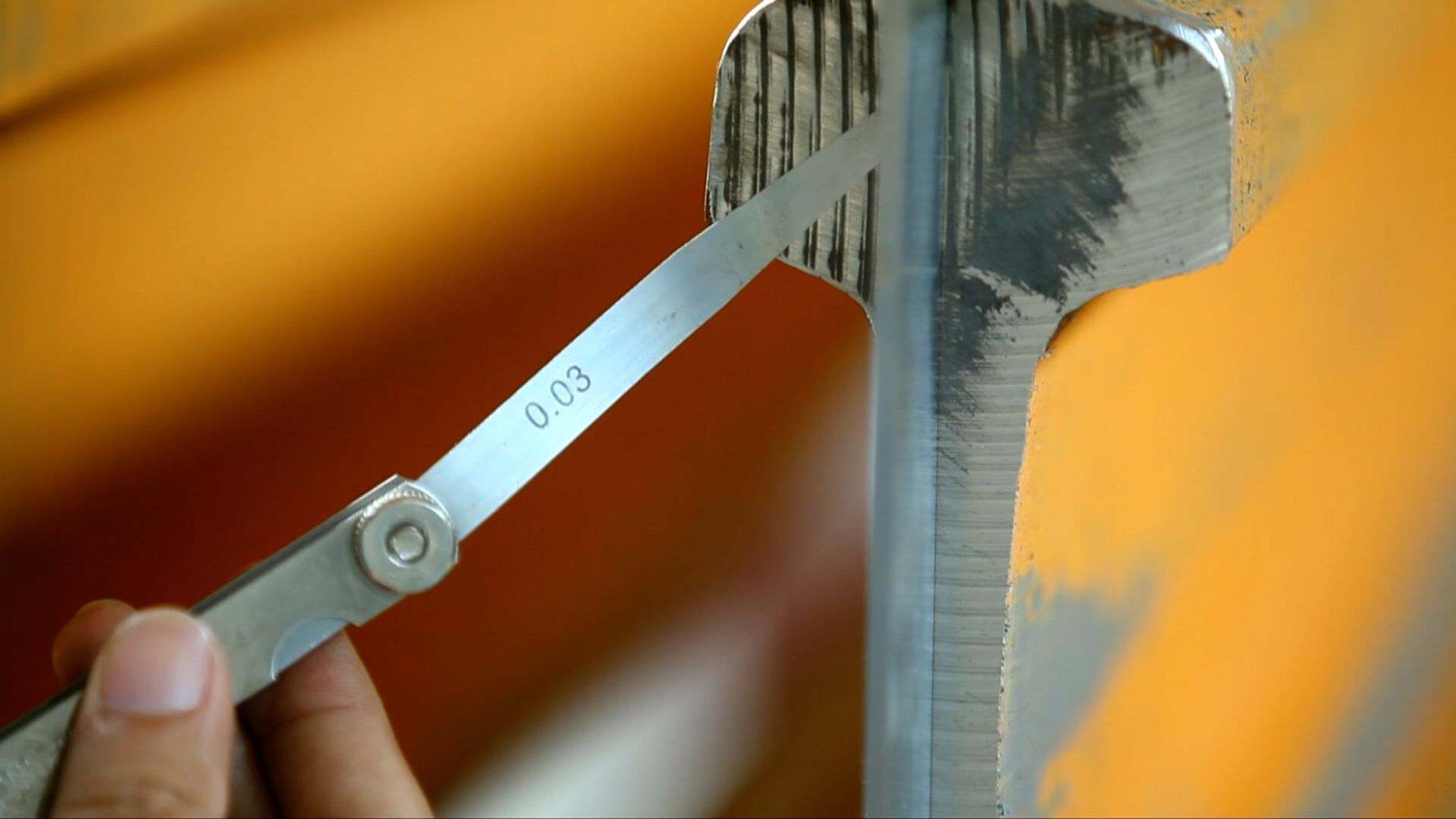
Domestic
16:19, 20-May-2019
Women welders behind Beijing-Shanghai bullet train rail
Huang Yichang
02:52

China's 350 kilometers per hour bullet trains ensure not only speed but also comfort. Much of this relies on the continuously welded rail, so there is a lot riding on them, particularly the welding. Taking on that task used to be a man's job as it required enormous strength. Now, thanks to machinery, the smoothness of the railway tracks can also be attributed to female welders.
All the workers at the railway welding workshop in the Jinan track division wear the same overalls. The same face masks protect workers from fumes and sparks, but underneath Tian Jialin's mask is lipstick and mascara.

Tian has worked in the welding workshop since 2018 and is one of 39 female welders working there. But she's not there to bring glamour. She's there to bring skill, both because she wants to prove herself in a still male-dominated industry, but also her passion for railway.
“When people ask why the bullet trains don't make a traditional 'clickety-clack' sound," says Tian, ” I am proud to be able to tell them how a 500-meter long continuously welded rail is laid, and the technique we use to deliver a smoother ride.”
Trains used to make that "clickety-clack" sound all the time because there used to be little gaps between the single pieces of rails. Bullet train tracks are still being built from single pieces of rail, but the wheels don't make sounds when going from one piece of track to another piece because they are all welded together into one piece. So at the workshop that Tian works at, they weld the rails together.
The principle is to heat pieces of 100-meter-long rails up to 1,400 degrees Celsius. The sections are welded together into a 500-meter-long steel rail in the workshop and then get transported on site to get welded together.
Some of Tian's work has contributed to the construction of the Beijing-Shanghai high-speed railway, which is 1,318 kilometers long without a single gap. This allows for high-speed trains to run smoother without damage on the train wheels.

Back then, the work was harder, and convincing women to do such work was harder too.
Eighteen years ago, when Zhou Hua first joined the team, many veterans advised her to work for some other department more suitable for women. She felt that they did not welcome her. “They thought a girl could not do the job well, which made me want to prove myself even more,” says Zhouhua, the director of the workshop.
So bit by bit, she worked to become one of the best welders in the workshop. It is because of her that many more women like Tian could join the team, and changing the prevailing attitude in the industry toward women.
“Modern railway welding can include modern equipment and automation. With brighter and cleaner working environments, there are many more women welders here than years ago,” Zhou told CGTN. “They can perform much better than when I started the work, and I hope there will be more woman joining, since they are more careful, especially for such precise work as railway welding.”

At the welding workshop in Jinan, there are now 109 welders, 39 of whom are women. The percentage of females in the workshop is twice as much compared with 10 years ago.
Whether more women join the railway welding work or not as the directer hopes, one thing is certain – through the work of others that came before, the careers of future female welders will likely be smoother as well.

SITEMAP
Copyright © 2018 CGTN. Beijing ICP prepared NO.16065310-3
Copyright © 2018 CGTN. Beijing ICP prepared NO.16065310-3